Bedouins in Israel
One of the many incredible things about Israel is its diversity - and not just in landscapes! A first-time visitor to the Holy Land will, most likely, be amazed at how many different kinds of people they see and talk to, whether it’s on the streets of large cities like Tel Aviv and Jerusalem, in tiny villages in the Galilee or in the desert areas of the south.
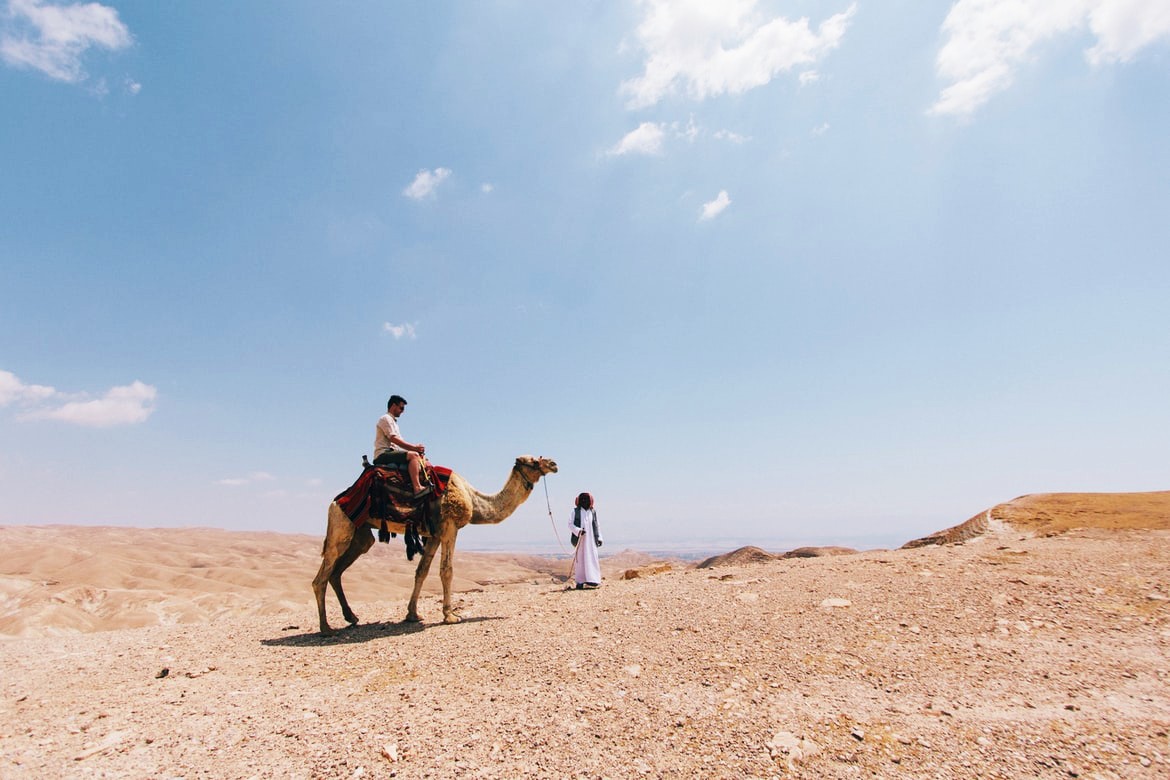
Riding Through The Desert, Israel. Photo by Robert Bye on Unsplash
Bedouin in Israel: Facts
And if you ask someone “What kind of people make up Israel’s population?” it’s quite likely that they will respond with a number of answers. Most people know that Israel is a country formed in 1948, to represent Jews, and they also know that the land is home to a fair number of Arabs (both Muslim and Christian).
But what about other, smaller, minority groups such as the Druze, the Bedouin and the Bahai?
Today we’re going to be taking a look at the Bedouin - a nomadic tribe of people who have lived in Israel’s Negev desert for hundreds of years - and explore their history, their culture and lifestyle and how they feel about their lives in Israel today.
Who are the Negev Bedouin?
The Bedouins in Israel are a small community of nomads, who live in Israel’s Negev Desert, and are part of Israel’s Arab Palestinian minority. The number of Bedouin in Israel today is estimated to be around 200,000-250,000, which accounts for approximately 3% of Israel’s total population. However, in the Negev desert (which is sparsely populated) they actually account for one in four residents.
The Bedouin tribes in Israel can be divided into three different groups, depending on their origins. The first are descendants of ancient Arabian nomads, the second hail from certain Bedouin tribes in the Sinai and the third are Palestinians who came from more cultivated areas.
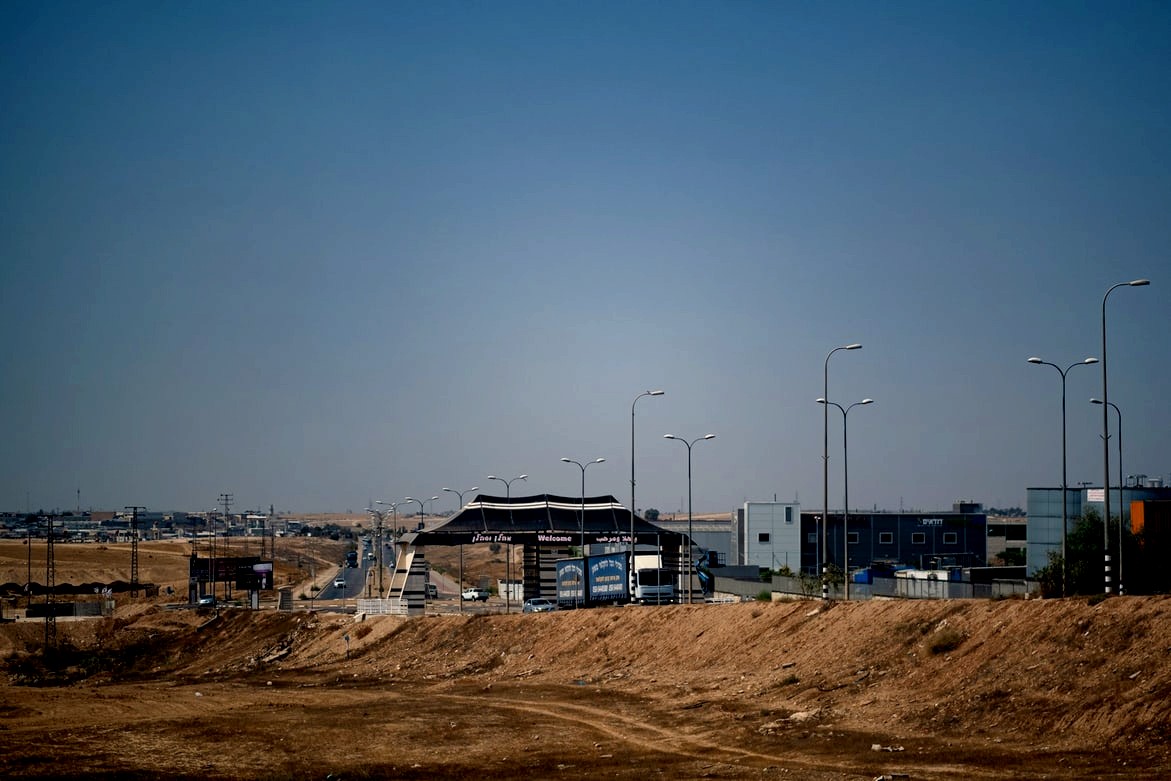
Rahat, the cultural capital of Bedouin in the State of Israel. Photo by Levi Meir Clancy on Unsplash
History of the Bedouin in Israel. From the Spice Route to 1948
The majority of the Negev Bedouin can trace their history back to the Hejaz region, located in the north of the Arabian peninsula (in modern terms, between Saudi Arabia and the Sinai area). Between the 14th and 18th centuries they began migrating to the Holy Land - of course, when you consider the history of ancient Israel, this means they are relatively new arrivals!
They travelled along the Incense Route and, in fact, many became wealthy because of their ability to trade luxurious goods. Historically, the Bedouin were (and still are) nomadic or semi-nomadic tribes. They would wander from place to place, in search of agricultural land where their sheep and goats could be put out to pasture, and after they left an area, it would replenish itself naturally. Since they were highly dependent on water, they moved places according to the climate.
In the 19th and early 20th centuries, neither the Ottoman rulers nor the British Mandate had any real interest in the desert part of the country, which meant that Bedouin - for the most part - were free to live and act as they chose. Of course, this all changed after the War of Independence (leading to the creation of the State of Israel, in 1948). After Egypt’s soldiers invaded Israel, the Negev soon resembled a terrible background and, soon after, around 90,000 Bedouin fled to Egypt and Jordan. By the end of the war, only 11,000 remained!
Mohamed, part of the Israeli Bedouin community in the Negev. Photo by Levi Meir Clancy on Unsplash
Bedouin History from 1948 onwards
Those in positions of power in the newly created state quickly realised that much of Israel’s landmass (actually, 60% of it) was desert. Not surprisingly, they regarded the Negev desert as an area where development and growth could take place and, in their haste to settle the land, did not give sufficient thought to the Bedouins already there.
Today, many historians argue that this policy has continued, insofar that every Israeli government since 1948 has ignored Bedouin claims to the land in their haste to develop it for their own purposes. (To read more about this subject, take a look at ‘Land Ownership’ below)
Where Do Israeli Bedouin Live?
Israeli Bedouin live in small villages and ‘townships’ in the southern Negev desert. Essentially, this is a ‘triangle’ located between the outskirts of Beersheba, Israel’s gateway city to the south, and the small cities of Dimona and Arad. You can also see Bedouin walking with their animals, en route from Jerusalem to the Dead Sea.
Fun fact: it was actually a Bedouin shepherd boy who discovered the Dead Sea Scrolls after one of his sheep became lost from the flock and he went into the Qumran Caves to look for it. The result? One of the great archaeological discoveries of the 20th century (the Dead Sea Scrolls can be seen today, at the Israel Museum in Jerusalem, where they are housed in a building that has been described as an ‘architectural masterpiece.’
A camel rests between trips, Negev Desert. Photo by Cole Keister on Unsplash
Bedouin Villages in Israel
After the War of Independence, few Bedouin remained in the Negev but as the years passed, they slowly began to return. By 1954, about 11,0000 were recognised by Israel as citizens and between 1968 and 1989, Israel built seven townships for them in the northeast of the Negev. Eventually, it is estimated that about 60% of them relocated to these towns, especially to the largest - Rahat.
Indeed, by 1984, the population of the town had grown sufficiently to be recognised as a city by Israel, which means today that it is the largest Bedouin city in the world. The other six townships in the Negev in which Bedouins in Israel live today are Tel as-Sabi (Tel Sheva). Ar-arat an-Naqab (Ar’ara BaNegev), Lakiya, Hura, Shaqib al Salam (Segev Shalom) and Kuseife (Kseife).
Having a Bedouin Experience When In Israel
If you’re travelling in Israel, it’s actually possible to see, first-hand, how this nomadic tribe lives, by taking a day tour (or even, sometimes, an overnight tour) to one of the many Bedouin villages in the Negev desert. The experience itself many report as being extraordinary - and one thing for which the Bedouins are well-known in Israel is their hospitality.
There is no one typical trip but almost every ‘Bedouin Experience’ will contain certain components, including food, hiking (or trekking with camels) and an overnight stay. Many trips include travel to off-the-beaten-track locations, up in the Judean Hills, or in arid parts of the Negev.
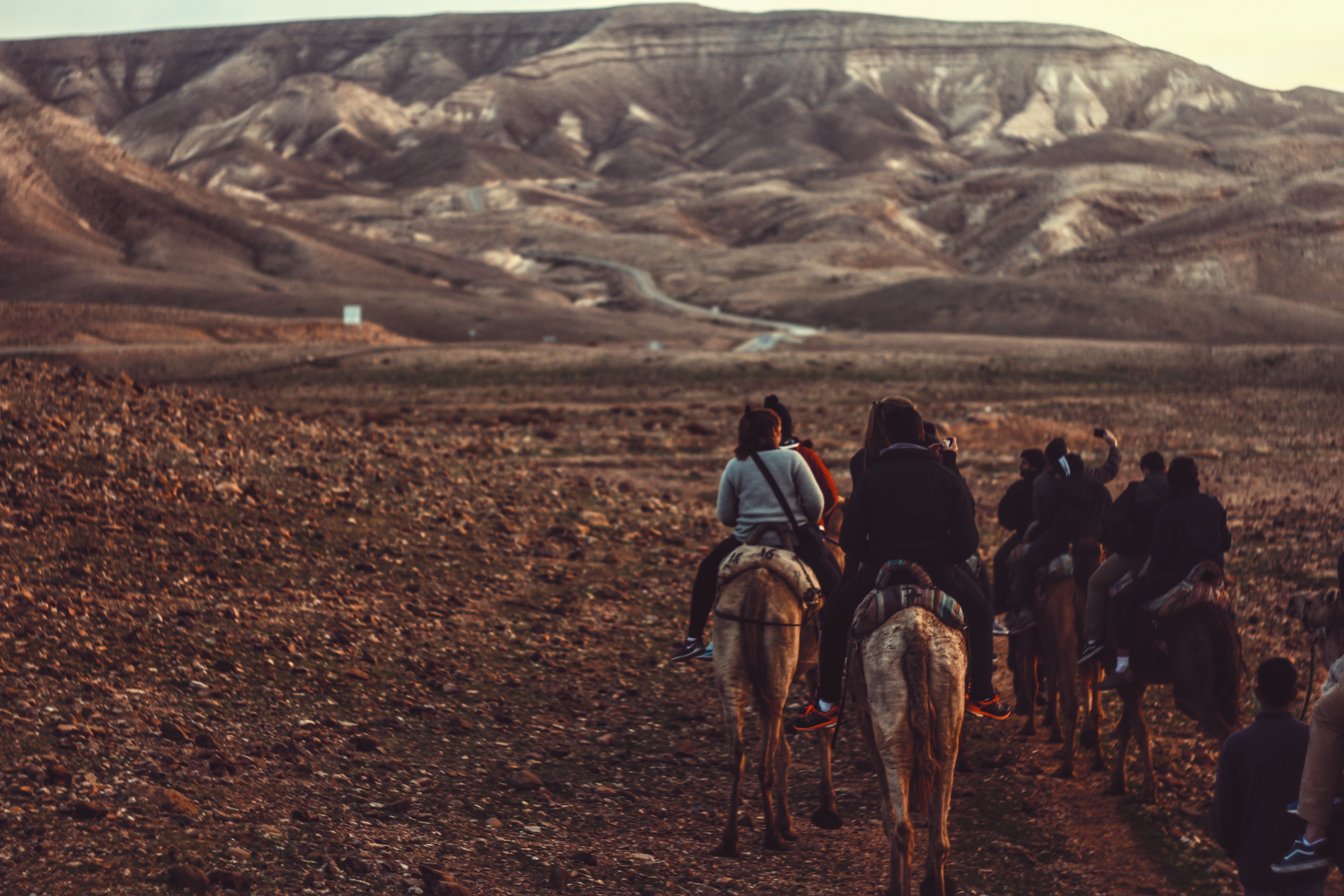
Negev tour, rocky desert on horseback, Israel. Photo by Greta Schölderle Møller on Unsplash
It’s possible, often, to take jeep tours (similar to Judaean Desert Safari Private Tour), partake in the age-old ‘coffee ceremony’ (after which you can try pita that’s just come straight from the fire), visit ‘off the grid’ villages and take night hikes under the starry skies. Bedouin lunches and dinners are usually served in a ‘khan’ which is a large Bedouin tent.
Meals often take the form of feasts - visitors sit on traditional mats (not tables) and food is served on platters that serve many people. A typical dinner could include homemade pita, salads, tahini and hummus and eggplant, followed by ‘Maklube’, a traditional Arab-style dish.
Maklube is a traditional one-pot dish, filled with rice, roasted vegetables and meat, which is flipped upside down when served (‘maklube’ means ‘upside down’ in Arabic!) And whilst it's not common to be served alcohol at these meals, you will be offered juices and sweet baklava for dessert!
An overnight stay in a Bedouin tent is often the highlight of a visit. They come in all kinds of shapes and sizes but are often large enough to accommodate dozens of people. Woven out of goat hair, in their most basic form they have mattresses for guests and in more luxurious tents the experience is more like ‘glamping’. Don’t worry either - they have thick rugs on the floor and warm blankets, so you won’t catch a cold, even on winter nights.
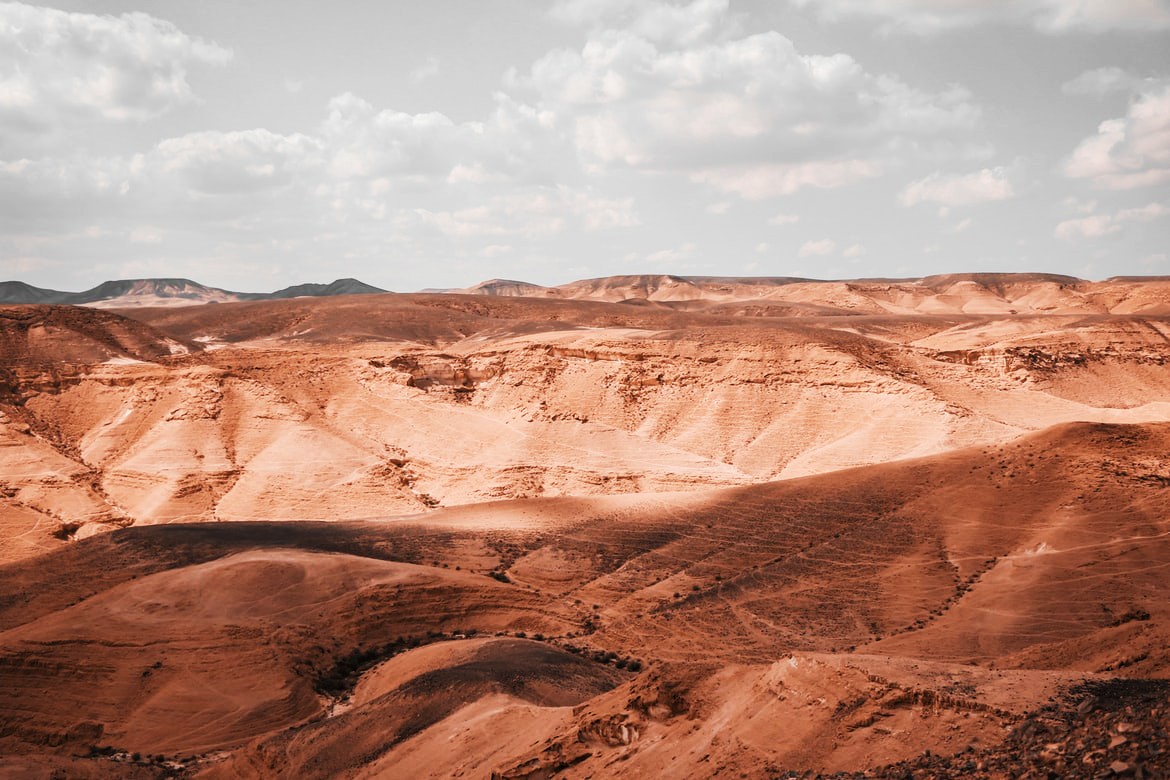
The Negev Desert, Israel. Photo by Matan Perlmuter on Unsplash
Land Ownership Issues:
The question of land ownership is still a complex one in modern-day Israel - legally, as well as socially and historically. As stated above, Israel built seven townships (one which became a city) but what is also problematic is the number of unrecognised villages in the country, in which basic services - such as electricity and water - are often hard to come by. As a result, these villages are often ‘off the grid’ and their inhabitants suffer as a result.
In the meantime, the Negev Bedouin have been claiming ownership of land in the Negev desert that amounts to 12 times the size of Tel Aviv! Since the 1970s, over 3.000 claims have been filed - the Bedouin argument is that these lands were illegally taken from them after 1948. They wish for these lands to be legally returned to them since they argue that they are indigenous people whose rights are continually being violated by the Israeli government.
They argue that these lands are theirs as they were to their grandfathers and fathers and that after the state of Israel was declared, they were not allocated adequate space. In contrast, the Israeli authorities have argued that Bedouins are trying to take over many parts of the Negev by building homes on empty land, staking out farming and grazing areas. Since they have no permits to build, the Israeli government argues that they are effectively building on state-owned land, which is illegal...
Israel is currently in the process of building a number of new villages or towns for the Negev Bedouin and these townships are intended to meet all of their future needs. The Israel Land Administration (ILA) also says it is doing everything in its power to deal with the problems of the landless Bedouin in the Negev. Clearly, the matter is very complex, since there are thousands of claimants (approximately 15,000) who represent the clans of the original claimants.
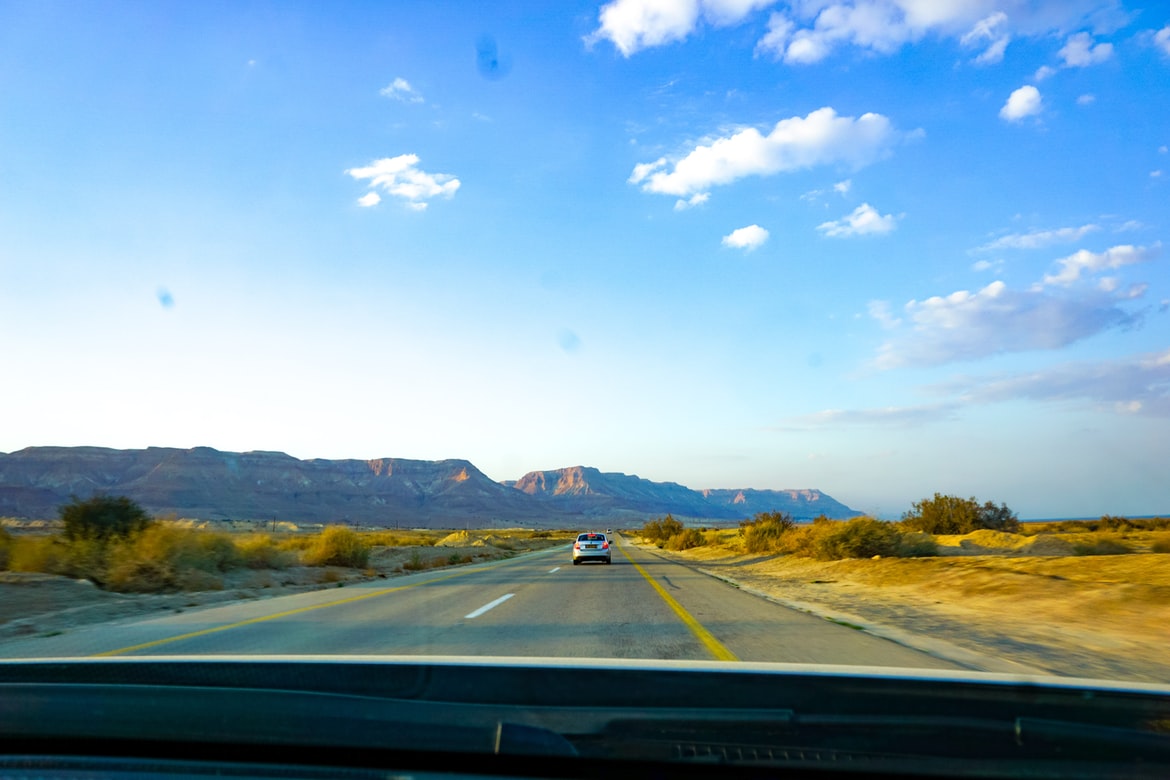
The Negev Desert from the car window, Israel. Photo by Ondrej Bocek on Unsplash
Identity and Culture of Negev Bedouin
The Bedouin are extremely tribal in nature and are organised in clans, in which are many extended family members. Bedouin culture is also patriarchal - the head of each family, as well as of each larger unit, which makes up the tribe, is called a sheikh. Each sheikh is aided by an informal tribal council of male elders.
Furthermore, polygamy is widely practised in Bedouin society, which means it is quite usual for a Bedouin man to have a number of wives and sometimes even dozens of children. In places such as Egypt and Jordan, the Bedouin are often referred to as Arabs and this is technically correct. However, there is a real distinction - Bedouins are different from other groups because of their extensive kinship networks (giving them a great deal of community support) and rich culture.
It is fair to say that the Bedouin have a very traditional (even conservative, by Israeli standards) culture. However, modern-day standards mean that they are far less homogenous a social group than they were, say, 50 years ago and many Bedouin now are pursuing professional and academic careers. In certain instances, they have also been incorporated into the military and police service.
For sure, Bedouins are known for their extraordinary hospitality and also resourcefulness (after all, they have managed to survive in harsh climates, with limited resources, for hundreds of years). The Bedouin are also extraordinarily independent - as animal herders, they are used to migrating into the desert during the rainy season and returning to cultivated land in the dry summer months. It is not surprising, therefore, that so many of them have struggled to adapt to ‘urban living’, after moving to towns.
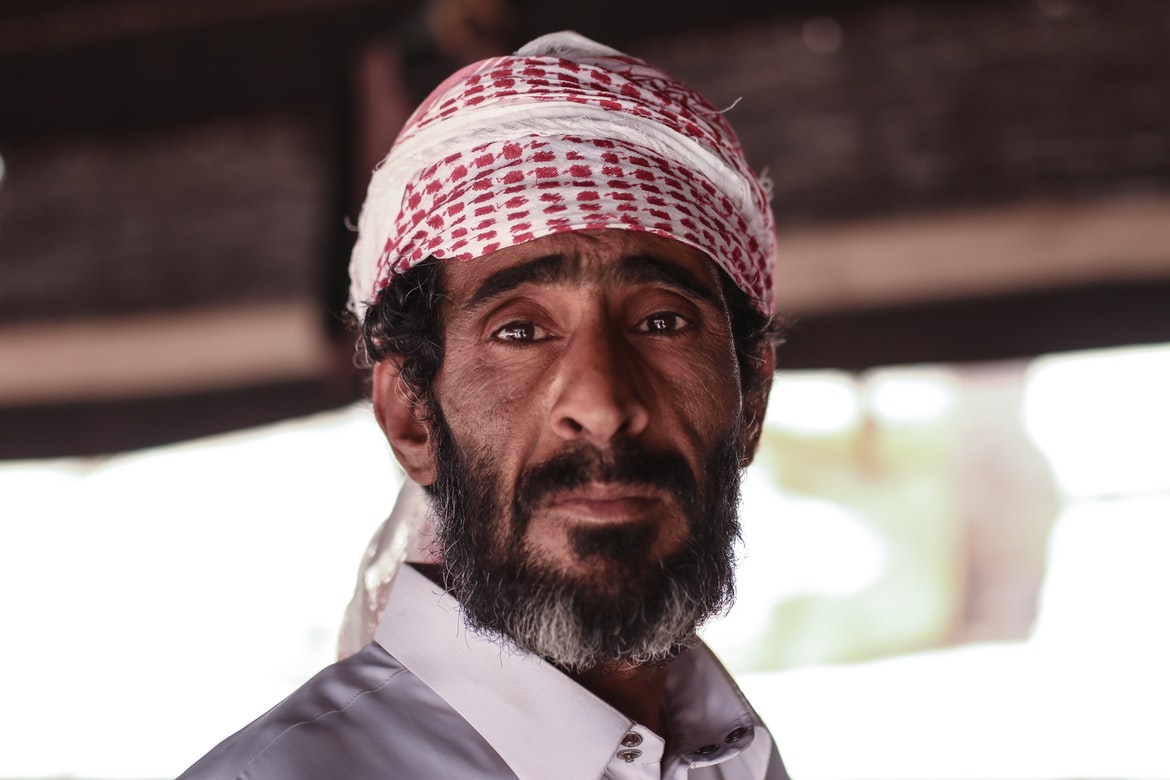
A Bedouin man in Wadi Rum, Jordan. Photo by Lukas Beer on Unsplash
The Bedouin Attitude towards Israel
This is a very interesting question since there is a lot of ambiguity in Bedouin attitudes towards Israel. On the one hand, they are not ardent nationalists and struggle to identify with the concept of Zionism. On the other, many are proud Israelis, who choose to serve in the IDF (service which is mandatory for all Jews).
Since Israel is very advanced in terms of education and high-tech, this means that more Bedouin have the opportunity to take advantage of technological progress and gain a university education (particularly women). Still, it is fair to say that the Bedouin community suffers from discrimination in Israeli society (particularly because its towns do not have the level of services and resources that they should have).
Many Bedouin are still on the bottom rung of the socio-economic ladder in Israel and - by moving to townships - they have lost the traditional livelihoods that sustained them for centuries and, for them, that means a loss of ‘freedom’. So their attitude to Israel, essentially, remains ambivalent.
If you are interested in Bedouin culture, feel free to book one of our customizable private tours!
 Login / Register
Login / Register
 Contact Us
Contact Us
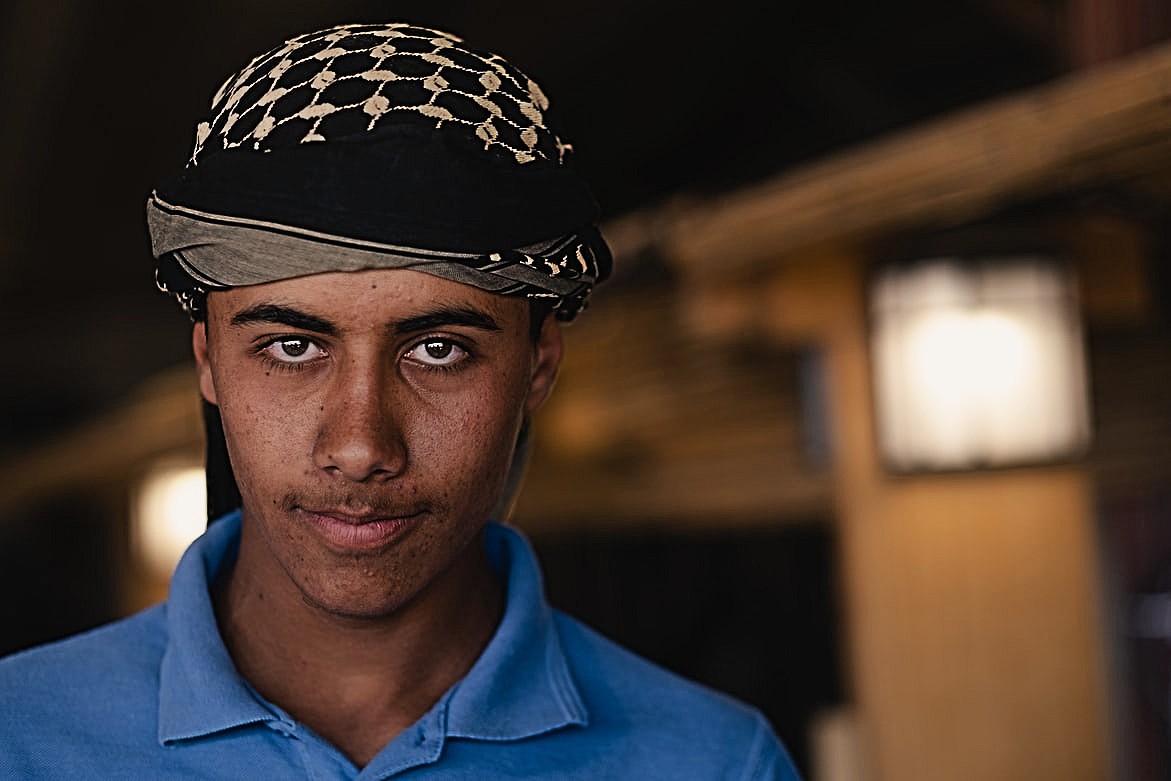
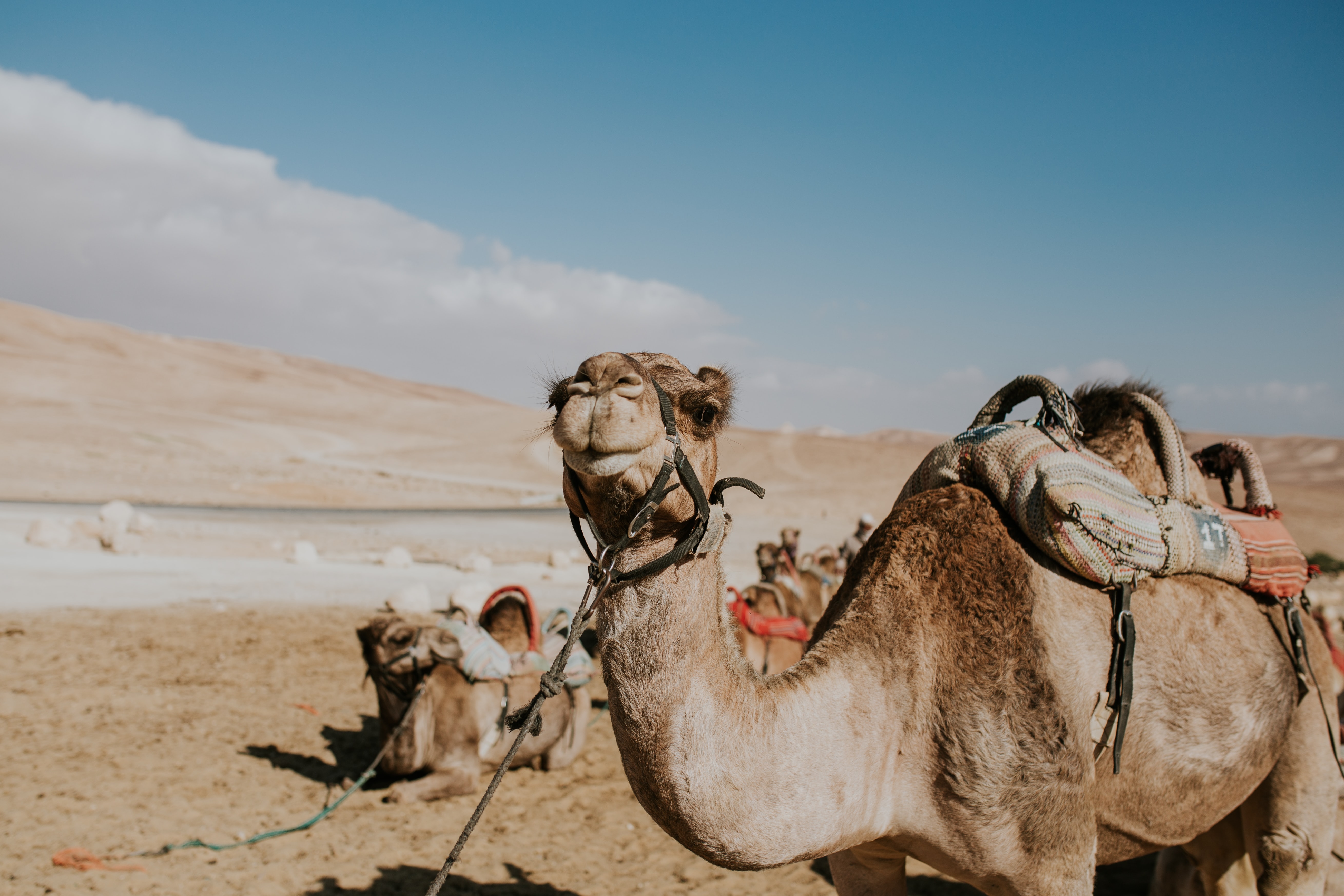
 Certificate of Excellence
Certificate of Excellence Guaranteed Departure
Guaranteed Departure Low Prices Guaranteed
Low Prices Guaranteed 24/7 Support
24/7 Support




